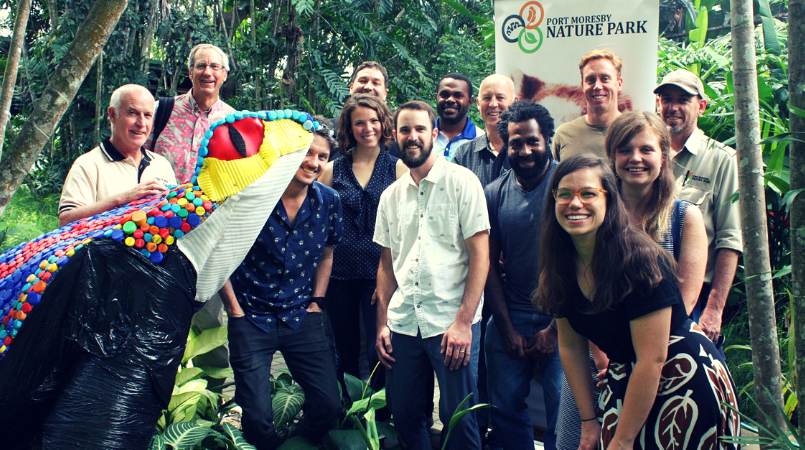
The Port Moresby Nature Park has announced plans to develop an amphibian conservation breeding program.
This follows the hosting of a group of dedicated amphibian researchers and volunteers from the International Union for Conservation and Nature (IUCN) Red List and The Amphibian Specialist Group (ASG) for a week-long workshop to assess the extinction risks of all amphibian species in Papua New Guinea.
During the workshop, a number of frogs’ status were raised to endangered, mainly due to decreasing population as a result of land clearing from logging and palm oil production.
The last time the amphibians of PNG were assessed for the Red List was over 15 years ago and since then over 100 new frog species have been discovered.
South Australia Museum frog expert, Stephen Richards, who attended the event, said: “There are more than 511 species of frogs discovered in Papua New Guinea and more are yet to be discovered.”
Taxon Officer and Communications and Development Officer of Amphibian Ark, Kevin Johnson, said: “PNG has two of the smallest frog species in the world, which also lay incredibly large eggs compared to the size of their bodies; there are frogs here that whistle; frogs with long noses or snouts; and quite a number of burrowing frogs. This diversity makes PNG’s frogs very special.”
General Manager of the Nature Park, Michelle McGeorge, said: “The Park will be working closely with the Amphibian Ark and our sister-zoo, Zoos Victoria, to advance into developing the amphibian conservation breeding program.
“The initial stage of this amphibian program will see the Nature Park house analog amphibian species in the hope that, by developing and advancing the skills of the Park’s amphibian keepers, we will be ready to work with species which might become very threatened in the future.”
Frogs play an important role in ecosystems as both predators and prey, sustaining the delicate balance of nature. They eat pest insects, benefiting successful agriculture around the world and minimising the spread of diseases, including malaria, and in turn, frogs are a food source for reptiles, birds and some mammals.
The skin of amphibians has substances that protect them from some microbes and viruses, offering possible medical cures for a variety of human diseases, including HIV/AIDS.
The Port Moresby Nature Park is dedicated to inspiring in others the guardianship of PNG’s unique natural environment and culture.
(Participants of the IUCN Red List and Amphibian Ark Workshop)
